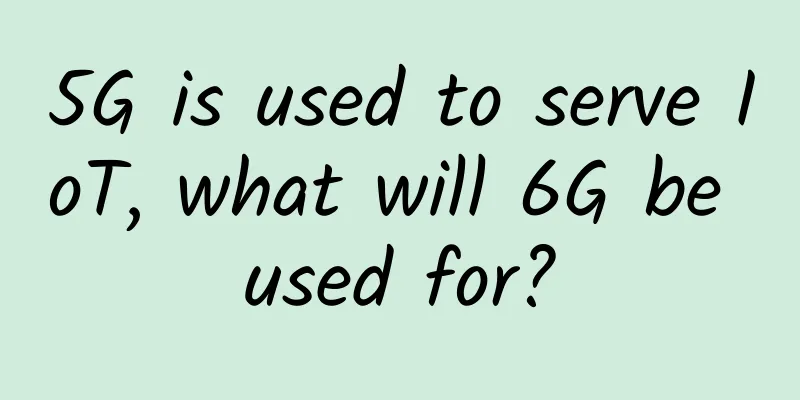The momentum of large-scale commercial use of NB-IoT is unstoppable

|
The Internet of Things is the only way to the interconnection of all things in the future intelligent world. The next trillion-yuan communication business has a huge market space and is an important driving force for promoting social development and stimulating GDP growth in the future. The NB-IoT technology based on licensed spectrum has stood out among many IoT technologies due to its advantages such as large capacity, wide coverage, low power consumption and high security, and has become the focus of industry attention. At present, the growth of human-to-human connections is weak, and traditional businesses are almost saturated. The Internet of Things has become a new blue ocean that operators are competing to expand. China Telecom, China Mobile, China Unicom, Vodafone, Deutsche Telekom, etc. have all made NB-IoT one of their important strategies. Since the freezing of the NB-IoT first protocol version in June 2016, in just two years, 45 operators in more than 30 countries around the world have deployed NB-IoT commercial networks, with one million activated sites. By the end of this year, it is expected that the number of NB-IoT commercial networks will reach 100, covering 45% of the world's area and 65% of the population. NB-IoT technology has matured and business is growing in scale Under the policy guidance and guidance of the Chinese government and the Ministry of Industry and Information Technology, since the freezing of the latest NB-IoT protocol version in 2016, NB-IoT technology has received high support from many vertical industries in just two years. The three major operators have rapidly deployed it commercially, with chip orders exceeding 10 million. The industry has prospered and developed, and chip shipments and business launches have reached 90% of the world, leading the world and becoming an industry benchmark for overseas operators and partners. Under the care of government policies and the requirements of the industry, the NB-IoT Industry Alliance and the Mobile Internet of Things Industry Alliance have been established successively, with as many as 1,500 partners and more than 40 industry applications have started large-scale commercial deployment.
In 2018, NB-IoT will show explosive growth in many vertical industries, bringing new opportunities and profit points to the industry. First, smart fire smoke sensors are the fastest growing industry at present. The number of industry bids has reached millions, and it is expected that the number of smoke sensors will reach 5 million by the end of the year, which will strengthen the supervision of the traditional fire blind spots in the nine small places and solve the government's worries. Secondly, after two years of testing and verification, many cities have begun large-scale deployment at the city level in the meter reading industry (water, gas), with excellent test results and recognition from industry customers. In 2018, the meter reading business will also increase rapidly and easily exceed one million. Third, there is also city-level battery vehicle monitoring, which provides effective technical means for the investigation and punishment of violations such as driving battery vehicles running red lights and driving in the opposite direction. In a provincial capital city in the west, 3 million battery vehicle monitoring will be deployed before the end of the year to add a sense of security to the city. Of course, there are more industries rushing to increase volume, such as white goods, street lights, manhole covers and other applications. Network optimization and terminal supervision still need to be strengthened The NB-IoT solution has been continuously verified in industry-scale commercial applications and has withstood the test. Now chip and network problems and obstacles have been resolved. From the statistical results, the vast majority of current problems are concentrated on the terminal side, because the industry's customized needs and differences in the capabilities of partners have affected the progress of the project. In order to better enhance the quality of NB-IoT industry terminals and standardize the traffic model, and maximize the utilization of network resources, it is hoped that the quality of NB-IoT terminals can be supervised at the national level, mandatory testing, and the issuance of terminal network access certification, otherwise access will be denied. We have also found that some problems are due to network interference and other issues, and network optimization is still needed. It is understood that China Telecom has fully launched the work of adjusting the heterogeneous frequency networking and network optimization, and will soon complete network optimization and improvement. Currently, some developers or users complain that NB-IoT is not as good as GSM. This is due to a lack of understanding of NB-IoT. If NB-IoT is simply understood as the same as GSM, as a pure pipeline without any business model adaptation, such a thoughtless design will inevitably have a huge impact on the access performance of the operator's network, and the success rate of the business will decrease. These problems do not mean that the NB-IoT technology itself is not good, but that industry developers need to complete adaptation development based on business model analysis. Take shared bicycles as an example. Some manufacturers design bicycles that use 2G communication methods. The traditional 2G communication method keeps the terminal in a long connection state after accessing the network. The advantage is that it can increase the real-time nature of the message interaction between the vehicle and the network, such as recording more detailed riding tracks. However, it also brings problems such as network congestion in hot spots, low success rate of unlocking and paying fees, and poor user experience. At the same time, the power consumption of the whole vehicle has also increased significantly. The bicycle must be equipped with additional power generation devices and rechargeable batteries, which also greatly increases the cost of the bicycle. NB-IoT technology is different from the traditional 2G long connection design. It adopts the communication method of message flow. When the bicycle is locked and paid, it sends an instant message flow to the operation platform through NB-IoT, and releases the connection resources immediately after sending, avoiding network congestion caused by long-term resource occupation. At the same time, it is in a dormant state with extremely low power consumption during non-business periods. This design can greatly reduce the power consumption of the whole vehicle. Only one large-capacity battery can meet the use of the bicycle throughout its life cycle (generally 2 to 3 years). At the same time, bicycle companies have also greatly reduced the cost of each bicycle. Calling for the 2G Internet of Things to actively migrate to NB+eMTC China has become the world's largest country in terms of the number of IoT users, with a rapid growth in the past two years. The number of connections has reached more than 400 million, accounting for more than 60% of the world. However, most of them are carried on 2G networks, and the number is still increasing at a rate of 20 million per month. The 2G network is already overwhelmed. In addition, the closure of 2G networks is a future trend. Currently, operators in the United States, Japan and other countries have shut down 2G networks. NB-IoT & eMTC will be the inevitable direction of the future Internet of Things. At the 3GPP plenary meeting in March this year, global representatives unanimously agreed that in the R16 protocol, network technologies for low-power wide area networks will no longer be studied, indicating that NB-IoT and eMTC will be part of 5G IoT technology. Therefore, whether in terms of the evolution of future network technology or the vitality of technology, NB-IoT and eMTC will definitely be the mainstream technologies of the future Internet of Things. It will be a wise move to guide demand to NB-IoT and eMTC in a timely manner. In order to reduce the pressure on the 2G network and adapt to the future trend of the Internet of Things, we call on the industry to switch 2G users and connections to NB-IoT and eMTC as soon as possible. At the same time, we hope that the government will increase policy guidance on NB-IoT & eMTC technologies and encourage the industry to give priority to NB-IoT and eMTC network deployment services based on business types. |
<<: When will the price of NB-IoT modules drop below 20 yuan?
>>: What technologies and applications do 5G and the Internet of Things have in the World Cup?
Recommend
DediPath: $39/month-E3-1240v2/16GB/2TB/1Gbps unlimited traffic/Los Angeles high-defense server
A few days ago, we shared the information about D...
The fourth largest operator is applying for a new LOGO and 5G broadcasting and television is expected to be seen within this year
The integration of the national radio and televis...
API becomes the first choice for malicious attacks in 2022. How can enterprises protect API security?
With the vigorous development of cloud computing,...
iONcloud November: San Jose optimization/Los Angeles monthly payment of $11.11 and annual payment of $111.1
iONcloud's Double 11 promotion runs throughou...
Interviewer: Can you tell me why TCP needs three handshakes and four waves?
The TCP protocol is a connection-oriented, reliab...
"Perceived and controllable applications that change on demand" F5 multi-cloud application service innovation online conference transcript
At 10:00 am on December 16, F5, the world's l...
VXLAN technology introduction: Building a virtual Layer 2 network with a Layer 3 network
1. VXLAN Overview 1. What is VXLAN VXLAN (Virtual...
What is Single Pair Ethernet (SPE) and how is it used in industrial applications?
[[416579]] Single-pair Ethernet was originally de...
RackNerd "Memorial Day" Sale: Los Angeles VPS from $14.99 per year
RackNerd has launched a Memorial Day promotion, w...
[Mid-Autumn Festival/National Day] CUBECLOUD: 30% off for Lite series/15% off for Pro series, available in CN2 GIA Hong Kong/CN2 GIA Los Angeles
CUBECLOUD (Magic Cube Cloud) has launched a promo...
[6.18] TmhHost: 20% off on CN2 GIA/high-defense cloud servers in Hong Kong/Japan/USA, starting at 35 yuan per month for CN2 in Japan
TmhHost is a Chinese hosting company founded in 2...
How 5G and edge computing are changing the game for online retailers
In today's ever-evolving retail world, stayin...
Huawei's Ryan Ding: Working together to create the most successful 5G
On October 14, 2020, at the ICT Leaders Forum, Di...
In 2025, the 5G core market size will reach US$9.497 billion
According to ResearchAndMarkets, the global 5G co...
5G issues should not be politicized
The official website of the European Competitive ...









